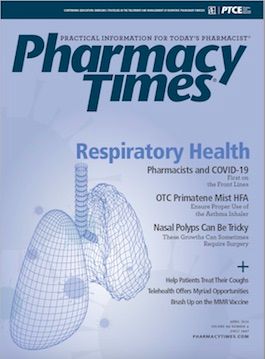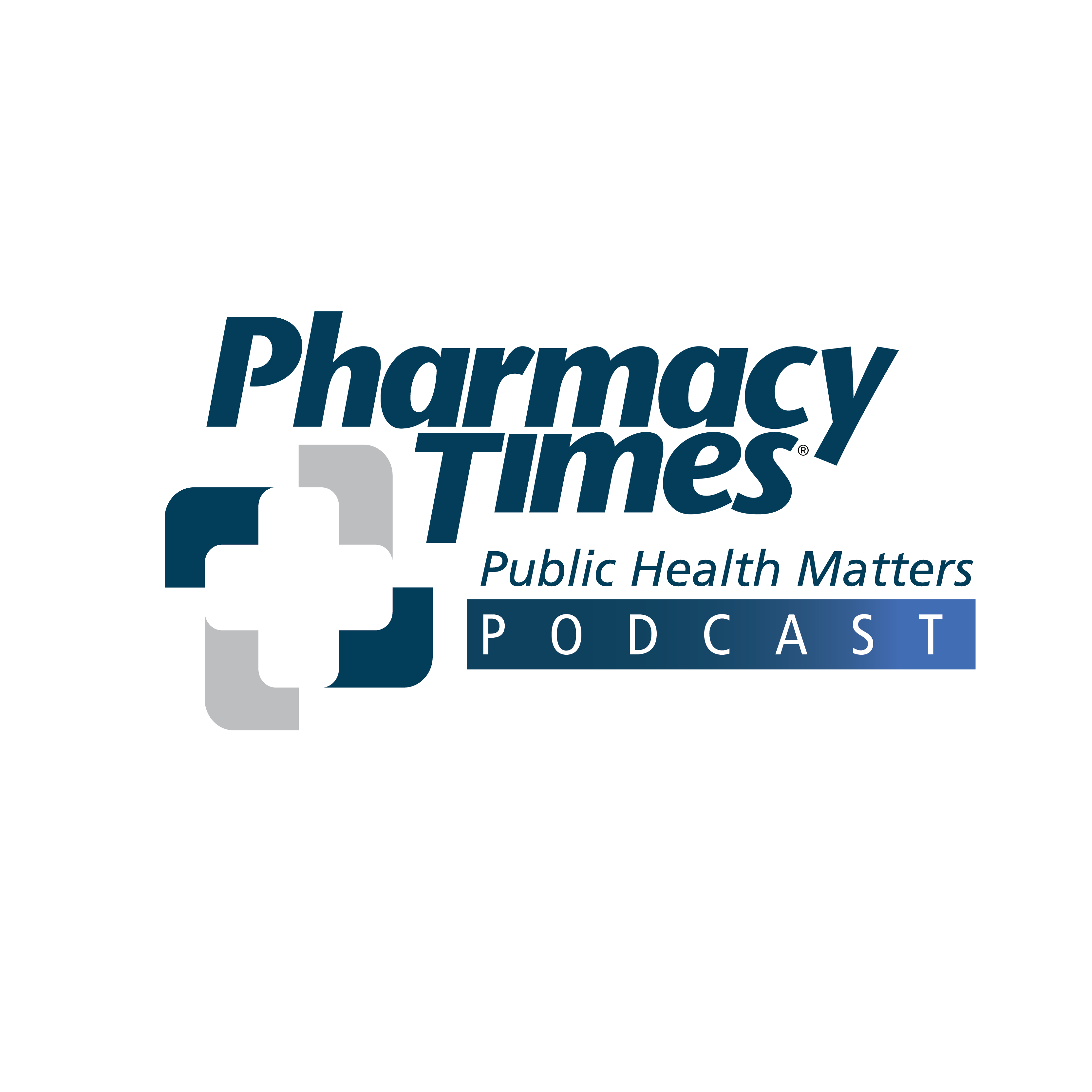Publication
Article
Pharmacy Times
OTC Case Studies(April 2020)
Case studies focusing on infectious disease.
CASE 1: COLDS
Q: RC is a 34-year-old male truck driver who is seeking information about the use of e-cigarettes. He reports that his primary care physician, who is treating RC’s diabetes, recommended smoking cessation. RC mentions that his friends have been trying to quit cigarette smoking via e-cigarettes. He is skeptical but asks about the latest recommendations. What recommendations do you have?
A: Based on the symptoms reported, BA likely has a common cold, for which antibiotics would not be a cure.1 He should try nonpharmacologic and single-ingredient OTC medications to provide supportive care for the symptoms. BA should also increase fluid intake and rest and consider increased humidification with a humidifier, steam, or a vaporizer.1 Per CDC recommendations, encourage him to use alcohol-based hand sanitizer and wash his hands frequently.2
BA should start taking a nonsedating antihistamine, such as cetirizine, fexofenadine, levocetirizine, or loratadine. Antihistamines may help alleviate a runny nose.3 Instruct BA to monitor for worsening symptoms; if they present, a medical referral will be necessary.
CASE 2: RESPIRATORY TRACT INFECTION
Q: RS is a 40-year-old woman who smokes. She has fatigue, fever, and a severe sore throat with inflamed lymph nodes. RS has tried natural remedies that her sister recommended, but she finds that the symptoms have continued, and she has also developed a cough with green and yellow sputum. RS stops by to ask about combination cold and cough products. What recommendations do you have?
A: Given this patient’s symptoms of a productive and worsening cough with a persistent fever, she cannot self-treat. Refer RS to her primary care physician, as she may be suffering from a bacterial respiratory infection and requires further evaluation in case she needs an antimicrobial agent.1,5 For supportive care, advise RS to avoid cigarette smoking, drink hot honey and lemon tea for sore throat relief, increase fluid intake, and rest.1
CASE 3: COMPLEMENTARY THERAPY
Q: RP is a 31-year-old man who asks about complementary and natural products for cold and respiratory infection prevention. He has heard about Echinacea purpurea and vitamin C but is unsure of the evidence. What information can you provide?
A : Of the products RP listed, prophylactic high-dose vitamin C (at least 2000 μg) has been shown to reduce the duration and severity of a cold. The results of the same meta-analysis compared the use of prophylactic vitamin C in study participants under physical stress, such as marathon runners and skiers, with use in community participants. Study results showed that vitamin C was effective in preventing colds in participants under stress.5 If RP expects physical stress during his trip, vitamin C may be an appropriate choice for him.
Echinacea purpurea has been shown to decrease mucin production and symptoms of respiratory infections. Its anti-inflammatory and immune stimulatory effects may be responsible for its efficacy. No standardized dose for Echinacea purpurea exists, and each product may be labeled per concentration and formulation.6 The results of a meta-analysis found Echinacea purpurea to be more effective in preventing recurrent infections than a placebo. If RP were to choose Echinacea purpurea, he should take it at the onset of cold symptoms.7
Similarly, elderberry (Sambucol) has been shown to exhibit anti-inflammatory and antiviral properties. Results of a study comparing elderberry with placebo showed a shortened duration of cold symptoms and fever in patients with the influenza virus.8 Additionally, the use of rescue medications, such as analgesics (acetaminophen and nonsteroidal inflammatory drugs) and nasal sprays, was decreased with the use of elderberry compared with a placebo.8,9
Finally, zinc has been shown to reduce the incidence of colds in healthy people. The results of a meta-analysis showed that zinc was effective in reducing the duration and symptoms of the common cold when administered every 2 hours at the onset of symptoms.10
Commonly advertised products Airborne and Emergen-C are not proven therapeutics for respiratory infections. However, they include proprietary blends of the above-mentioned complementary therapies.
CASE 4: NASAL CONGESTION
Q: PP is a 22-year-old male college student who stops in to purchase nasal decongestant spray Afrin. He moved into a carpeted apartment this semester and suffers from dust mite allergies. PP stopped taking his antihistamine loratadine, as it had stopped working well for him. He has a cough, a postnasal drip, and a stuffy nose with trouble breathing through his nose. He asks whether he should know anything in particular about Afrin. What information can you provide?
A: PP’s symptoms are consistent with allergic rhinitis that progressed to congestion and postnasal drip. He should resume a nonsedating antihistamine. If loratadine no longer works, he can try cetirizine, fexofenadine, or levocetirizine.11 For topical decongestant oxymetazoline (Afrin), he should limit use to 2 doses every 24 hours for a maximum duration of 72 hours.10,12 Rebound congestion has been associated with overuse of oxymetazoline. The therapy duration is controversial because results of some studies have shown a treatment duration up to 8 weeks to be safe without rebound congestion. Counsel PP on appropriate nasal spray technique, as ingestion of oxymetazoline may result in adverse effects, including coma, drooling, hyperthermia, and nausea.13,14
Ammie J. Patel, PharmD, BCACP, is a clinical assistant professor of pharmacy practice and administration at the Ernest Mario School of Pharmacy and an ambulatory care specialist at RWJBarnabas Health in New Jersey.Rupal Patel Mansukhani, PharmD, CTTS, FAPhA, is a clinical associate professor at the Ernest Mario School of Pharmacy at Rutgers, the State University of New Jersey, and a transitions-of-care clinical pharmacist at Morristown Medical Center in New Jersey.
REFERENCES
- Buensalido JAL, Valencia JCB, Rhinovirus (RV) Infection (common cold) clinical presentation. Medscape website.emedicine.medscape.com/article/227820-clinical. Updated July 30, 2019. Accessed March 15, 2020.
- Common colds: protect yourself and others. CDC website. cdc.gov/features/rhinoviruses/. Updated February 11, 2019. Accessed March 15, 2020.
- De Sutter AI, van Driel ML, Kumar AA, Lesslar O, Skrt A. Oral antihistamine-decongestant-analgesic combinations for the common cold. Cochrane Database Syst Rev. 2012;(2):CD004976. doi: 10.1002/14651858.CD004976.pub3.
- Harris AM, Hicks LA, Qaseem A; High Value Care Task Force of the American College of Physicians and for the Centers for Disease Control and Prevention. Appropriate antibiotic use for acute respiratory tract infection in adults: advice for high-value care from the American College of Physicians and the Centers for Disease Control and Prevention. Ann Intern Med. 2016;164(6):425-434. doi: 10.7326/M15-1840.
- Hemilä H, Chalker E. Vitamin C for preventing and treating the common cold. Cochrane Database Syst Rev. 2013;1:CD000980. doi: 10.1002/14651858.CD000980.pub4.
- Hudson JB. Applications of the phytomedicine Echinacea purpurea (purple coneflower) in infectious diseases. J Biomed Biotech. 2012;2012:769896. doi: 10.1155/2012/769896.
- Schapowal A, Klein P, Johnston SL. Echinacea reduces the risk of recurrent respiratory tract infections and complications: a meta-analysis of randomized controlled trials. Adv Ther. 2015;32(3):187-200. doi: 10.1007/s12325-015-0194-4.
- Zakay-Rones Z, Varsano N, Zlotnik M, et al. Inhibition of several strains of influenza virus in vitro and reduction of symptoms by an elderberry extract (Sambucus nigra L.) during an outbreak of influenza B Panama. J Altern Complement Med. 1995;1(4):361-369. doi: 10.1089/acm.1995.1.361.
- Zakay-Rones Z, Thom E, Wollan T, Wadstein J. Randomized study of the efficacy and safety of oral elderberry extract in the treatment of influenza A and B virus infections. J Int Med Res. 2004;32(2):132-140. doi: 10.1177/147323000403200205.
- Singh M, Das RR. Zinc for the common cold. Cochrane Database Syst Rev. 2011;(2):CD001364. doi: 10.1002/14651858.CD001364.pub3.
- Seidman MD, Gurgel RK, Lin SY, et al. Clinical practice guideline: allergic rhinitis. Otolaryngol Head Neck Surg. 2015;152(suppl 1):S1-S43. doi: 10.1177/0194599814561600.
- Cold, cough, allergy, bronchodilator, and antiasthmatic drug products for over-the counter human use. Electronic Code of Federal Regulations website. ecfr.gov/cgi-bin/text-idx?SID=694f58669bc9c39632fe5305dd2358e6&mc=true&node=pt21.5.341&rgn=div5#se21.5.341_172. Updated March 23, 2020. Accessed March 25, 2020.
- Mortuaire G, de Gabory L, Francois M, et al. Rebound congestion and rhinitis medicamentosa: nasal decongestants in clinical practice. Critical review of the literature by a medical panel. Eur Ann Otorhinolaryngol Head Neck Dis. 2013;130(3):137-144. doi: 10.1016/j.anorl.2012.09.005.
- US Department of Justice. CMEA (Combat Methamphetamine Epidemic Act 2005). Drug Enforcement Administration website. deadiversion.usdoj.gov/meth/index.html. Accessed March 15, 2020.







